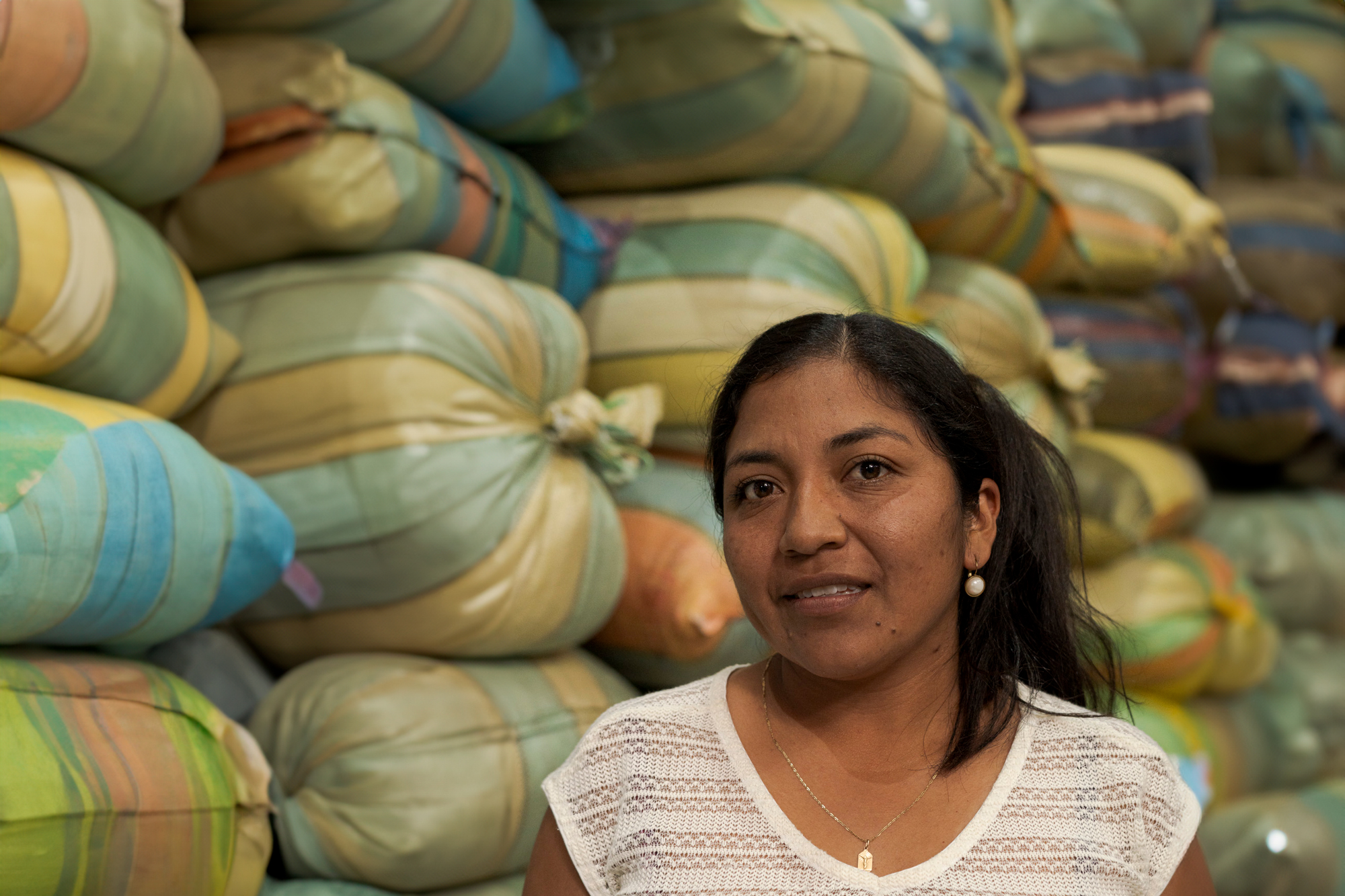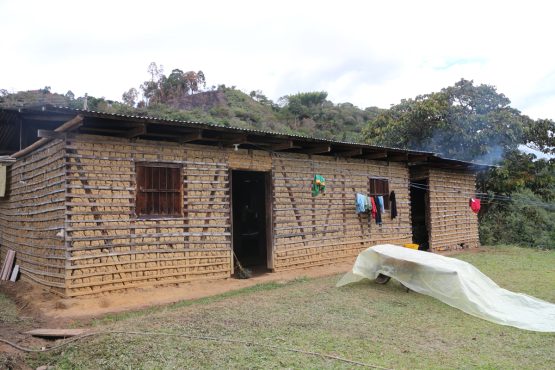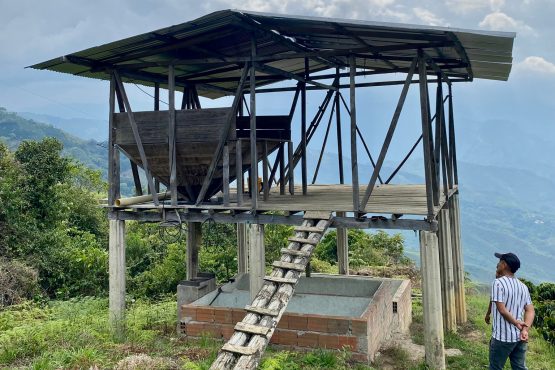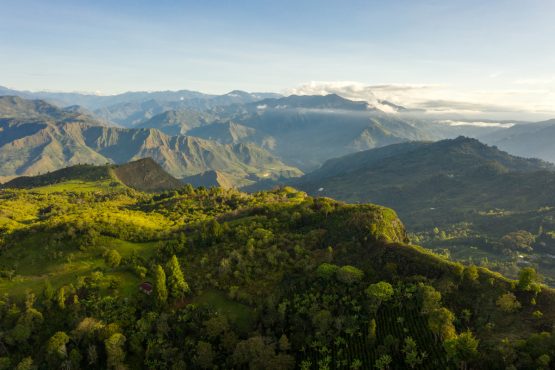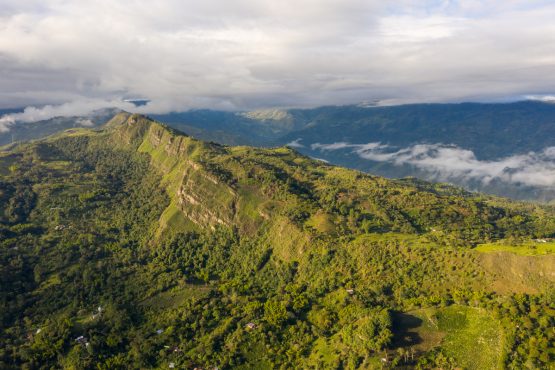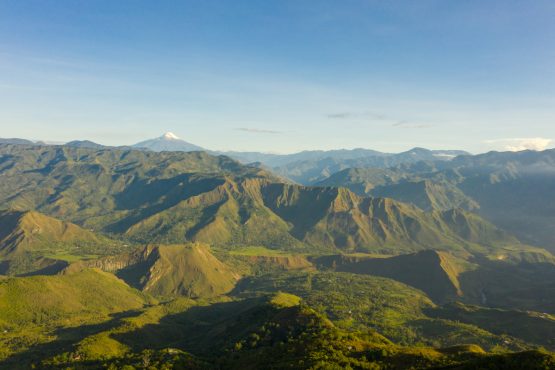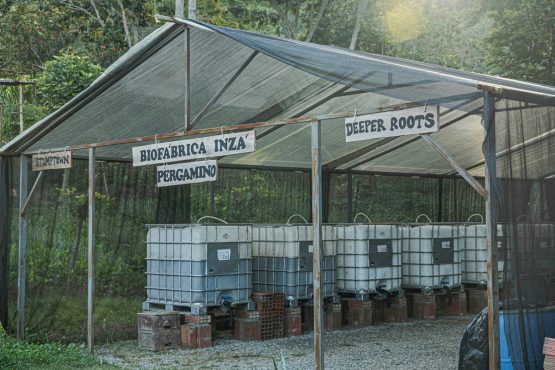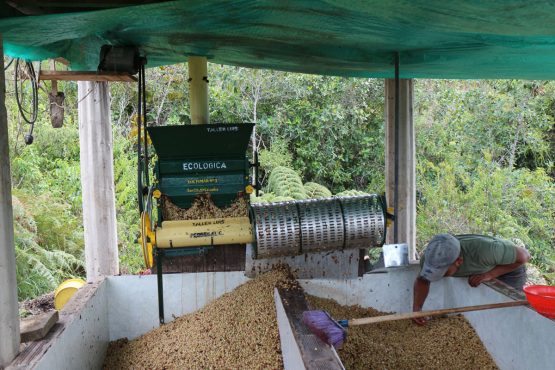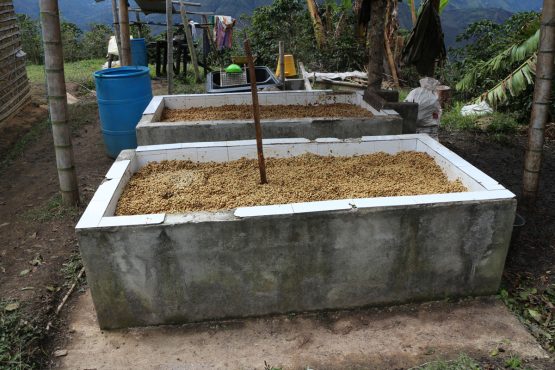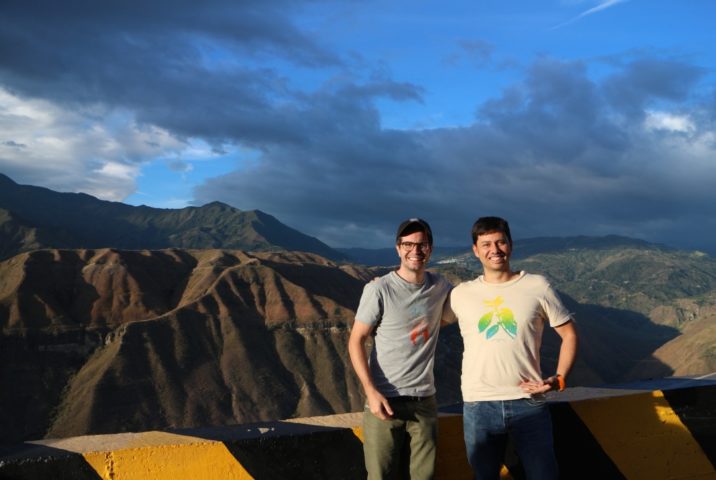Bellavista
Intensely sweet and fruit forward, with winey acidity. Blueberry jam, raspberry and dark chocolate.
This coffee was produced by Zulieth Sancho Masabuel on her small farm, Bellavista (which translates to ‘beautiful view’ in Spanish), located near the town of San José, in the municipality of Inzá in Cauca state, Colombia.
Bellavista is just two hectares in size — typical for the region, where farmers grow and process coffee on tiny plots of land. The farm is located at 1,850m above sea level in the steep hills that surround San José. Zulieth is the daughter of coffee producer Luz Mila Masabuel (of El Totumo) and grew up surrounded by coffee trees. Today, Zulieth represents the younger members of the Masabuels, an influential, multi-generational coffee producing family who have played a key role in the San José coffee community for over three decades.
When Zulieth first began working in coffee, her goal was to help the family business become more successful and sustainable in the long run. She is currently studying business administration in Neiva, a city in the state of Huila, about three hours commute from Inzá. Every weekend Zulieth embarks on the long journey to Bellavista, spending most of her spare time tending to her 10,000 trees and visiting her family’s farm. While her days are long and exhausting, Zulieth believes her studies will only strengthen her prowess as a coffee producer, and will give her the tools necessary to manage the family business in new and innovative ways.
Bellavista is mainly planted with the hybrid Castillo variety, which was introduced by Colombia’s Coffee Federation (FNC) in the 1980s, as part of the country’s efforts to reduce the incidence of coffee leaf rust without affecting cup quality. Like her parents, Zulieth farms her coffee with traditional techniques and most of the labour is provided by her and her family. Fertilisation occurs around three times a year, usually after manual weeding, and pesticides are rarely used.
Like many of the nearby towns, San José has breathtaking views of Colombia’s highest volcano, Nevado del Huila, which sits at the point where the states of Huila, Tolima and Cauca meet. The rich, volcanic soil of the area makes it ideal for agriculture and contributes to the excellent cup quality of coffees grown and processed here. Cool overnight temperatures result in dense beans, which are notable for their sweetness and complexity. Lower temperatures and high rainfall also influence processing techniques, with longer ferment and drying times being necessary.
ABOUT INZÁ
The municipality of Inzá is located in the corner Cauca state, bordering with Tolima and Huila and looking out to the west over the Pacific Ocean. This region has excellent conditions for growing high-quality coffee, with high elevations and rich volcanic soil. The plateau has a very stable climate year-round thanks to its proximity to the equator and the surrounding mountains, which protect the coffee against the humidity of the Pacific Ocean and the trade winds from the south. This region is an important source of water and wildlife for Colombia, in addition to being prime coffee-growing land.
Inzá is the traditional home of the Nasa (or Páez) people, one of Colombia’s largest indigenous groups. During the Spanish invasion of Colombia, many of the Nasa were able to avoid bloodshed by escaping to the rugged hills and high plateaus of the Andes Mountains where the Spaniards were unable to pursue them. Today, the Nasa economy relies on agriculture, and society is organised into tight knit farming communities who distribute duties equitably under the guidance of cabildos, or locally elected councils. Like many indigenous groups across Latin America, the Nasa have spent decades lobbying for the return of their land rights, finding success in recent years. Their struggle has led to legal recognition of the fundamental rights of indigenous peoples, including recognition of the autonomy of their communal indigenous lands in the 1991 Colombian Constitution.
Coffee from Cauca has historically been very difficult to access due to the region’s isolation and instability. For many years this part of Colombia was under the control of Colombia’s notorious rebel group, the FARC, and as a result, it was unsafe and violent. Since 2012, safe access to this region has been possible as a result of peace talks between the national government and the rebels. Thanks to these efforts, more and more stunning coffees from small producers in the region have become accessible to international buyers.
Our export partners for this coffee, Pergamino, have worked hard commercialise specialty-grade coffee throughout Cauca, and are now able to source some outstanding coffees from very dedicated producers. They work closely with the producers to give them feedback on their coffees (provided by Pergamino’s expert team of cuppers) and provide top up payments when the coffee is sold at a higher premium.
Head here to learn more about the work of Pergamino.
HOW THIS COFFEE WAS PROCESSED
The coffee in this lot was selectively hand-harvested, with most labour being provided by Zulieth and her family. It was processed using the washed method at the farm’s ‘micro-beneficio’ (mill).
The coffee was pulped using a small manual or electric pulper and then placed into a washing tank, where it was fermented without water for around 24 hours (depending on the weather and the farm’s location) and then washed using clean water from nearby rivers and streams.
The coffee was then carefully dried (over 10–18 days) on parabolic beds, which are constructed a bit like a ‘hoop house’ greenhouse, and act to protect the coffee from the rain and prevent condensation dripping back onto the drying beans. The greenhouses are constructed out of plastic sheets and have adjustable walls to help with airflow, and temperature control to ensure the coffee can dry slowly and evenly.
Once dry, the coffee was delivered to Pergamino’s warehouse in Medellín, where it was cupped and graded. After being evaluated and approved, coffee was rested in parchment until it was ready for export.
